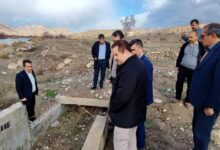History and power in the works of Bahram Beizai / Yazdgerd historical decline parliament

Ellipse, like any other author, has its own mental space and thematic themes and keywords, which the continuation of use has turned them into a kind of archetype and a special “symbol network” in the world of his works to use them and refer to objects, people and actions to objects. , People and other actions, to reveal deeper facts about how the world works. Many of them can be seen in all of his works, but may fade or become bolder over time. Familiarity of the audience with them helps to understand and naturally enjoy more of his works and cinema.
Theater News Base: The purpose of this memo is to analyze the “institution of power” with the focus on the two films “Tara Guerrilla” and “Death of Yazdgerd”; But because this combination is meaningful in the context of history, the two words history and power have been used together as a substitute for the “institution of power.” However, a separate study of “history” in elliptical works is a detailed and separate issue.
چتکه تارا
The dominant pattern of this film is the pattern of “a stranger in the crowd”, which is repeated in most of his films from “Uncle Mustache”, but this time with the presence of a sword and a historical man, “power” and followed by “history” is very prominent. The only grandfather’s relic and legacy for Tara is an old sword that does not work now, but the historical man, under the pretext of carrying a sword, gets in his way so that Tara can love him and, in fact, realize his historical destiny.
For the historical man, the sword is a sign of the memory of his lost lineage on earth, and he seeks the remembrance and permanence of their deeds and efforts. He falls in love with Tara first and leaves the sword every time to have an excuse to reappear with the inner logic of the film. The importance of the sword becomes clear to Tara when a dog attacks her and her children on the beach and she kills the dog with the same sword in their defense. So this sword also has a function: defense. And the historical man behind the defense is wounded. It is this “need” that makes Tara realize the importance of the sword.
But just when Tara accepts the love of the historical man, the historical man leaves her. No one but Tara can control a wounded horse in the fields of Rome; A sign of the power of femininity and the lost and neglected anime of our time and throughout history. Tara rides a horse towards the sea and falls into the water; A kind of baptism for the final encounter with the historical man she now loves. In the jungle dialogue sequence, Tara wears red and Aphrodite does nothing to seduce or seduce the historical man.
When a historical man goes to sea, Tara strikes the waves with a sword as a sign of rebellion and protest against the historical destiny and heritage in which he has no role. But the mythical world of the film is over, and Tara’s sword does not do what Moses’ staff did; The wave does not break and the historical man does not return. The dark side of the masculine energy of the historical man is that he has deprived himself of the blessings of love and life in order to attain seemingly greater honors. He is also a victim who sees everything on the battlefield and has not learned to love and be loved and live in one word.
Death of Yazdgerd
The filmmaker in “Death of Yazdgerd” confronts history more directly and has a more critical view of it. Tara, who has been acquainted with her background and past by a historical man (the need to rethink the past), after contemplating on it, this time manifests herself in “The Death of Yazdgerd” in the awe of the miller. If Tara falls in love with a historical man and accepts his integrity, in “Death of Yazdgerd” she becomes acquainted with other aspects of her in the form of the king, the king’s commanders and mills, as well as another aspect of herself as a woman and revives a new definition of “honor”. . The presence of Susan Taslimi in both maps also reinforces this assumption and the metaphorical and hypertextual relationship.
Has the meaning of honor changed in the historical worldview of Beizai between the construction of “Tara Guerrilla” and “Death of Yazdgerd” or should we interpret it differently? Here, honor is no longer the profession of the historical man, but in the face of the constant onslaught of death, the effort to survive and then defend the culture is a kind of honor.
The “originality of the question” in “Death of Yazdgerd” is more prominent than all his works. Questions and doubts about a definite historical statement that has remained unanswered since his student days remain with him to challenge it in this film, and at the end of the film he reaches the theme that history is written by the victors. The principle of design and general strategy for the plot of the film is the same historical proposition that we see in the credits: “So Yazdgerd fled to Merv and was milled. “The miller killed him in a dream out of greed for gold and property.”
The story is told just when the 400-year-old Sassanid dynasty came to an end and Yazdgerd was considered the most confused man in history and legend. “Shamiran” or “Shahmiran” means timeless, meaning zero moment; When a date is over and another date has not yet begun. “Death of Yazdgerd” Agrandisman is a historical turning point, after which the direction of history changes, it tends to zero compared to the whole of history.
Ancient Iranian mythology and literature considered all the chosen creatures of Ahuramazda to have a divine gift or gift, and someone was worthy of a kingship and glory that he possessed. The story of culture and the idea and benefit of it can be followed throughout history. In contemporary history, the Qajar kings considered themselves the shadow of God or the shadow of God on earth. Mohammad Reza Pahlavi also mentions the support of supernatural and unnatural forces in “Mission for My Homeland” and in recent years we have come to the famous story of Haleh Noor. Believing in or owning a fortune becomes problematic because one becomes deluded that one owns this abstract thing forever and no longer considers oneself obligated to “selfishness and diligence in it.” From this point of view, the characters of the film, now that the king is dead and he is no longer lucky, accept the calmness of his reality. Beizai believes that in the past and present of this land, there has been no dialogue between intellectuals and ordinary people. This statement can be extended to the whole of history. And now “The Death of Yazdgerd” is an opportunity for dialogue between the king and his subjects; But the discussion of power has a two-way conditional relationship with its desecration. Dialogue is the ground for desecration, and desecration opens the door to further dialogue. The assembly, which is supposed to be the trial of the millers (nation / subjects / people), has the opposite function and becomes the trial of Yazdgerd and its supporters and institutions (institution of power), during which many things are determined.
The dialogue strategy by the Asyaban family, whether cleverly and with the intention of escaping the death sentence, or accidentally and necessarily the theatrical world of the film, saves them from death. This dialogue is only an opportunity to talk and discuss and describe the situation and defense, but also the protest of the people (nation) to recognize and rethink what has happened to them. In the meantime, by deciphering many things in the end, we feel that something has shifted in the history of the film, even inside and outside the film. Look at the conversations between the miller and his wife, and point to the woman’s prostitution in times of famine and poverty.
The presence of the priest in the film is another story and can be the introduction of another chapter entitled “The historical relationship between power and ideology.” Here, too, no one cares as much about the outward appearance and credibility of the king’s assassination as the priest.
By casting doubt on sound and definite historical propositions, Beizaii insists on putting aside our hasty judgments and rethinking them through the lens of reason and logic. “Our culture needs to rethink all of its beliefs, its history, its history, and what has hindered its growth and stagnation,” he says bluntly. We all have to re-think about everything and re-evaluate everything with today’s intellect and perception and measure the definitions of the past and pass the test of wisdom and organize in the form of a knowledge, insight and wisdom today. “Without this revision, any modernization in society will be superficial and a shallow copy of other countries.”[1].
Completion
In all his works, Beizai says the hadith of the soul; When he talks about history and myth, and when the context of his story is the present. We understand some of them and we still do not understand some of them. The concept or keyword “the presence of a stranger in the crowd” may have no place in the Arab world at a young age and at the beginning of his filmmaking period, and may require the analysis and psychoanalysis of its creator first, but in “killing” or “when we are all asleep” It is a deep and experienced concept.
From the same “Crow” (1355), he had predicted the difficulty of his progress. For the deaf and dumb students, Asieh tells the story of a crow and a woodpecker perched on two neighboring trees. The crow asks, “Why do you pound the trees with your long beak from morning till evening?” “Let me see what is behind them,” says Darkoob. “I peel the skin and find out how deep it is.” “Doesn’t your point hurt?” Asks the crow. And the woodpecker replies: “It’s worth what I find. “Anyone who looks back on something accepts their hardships.” Now the woodpecker, who has been searching for truth and meaning for a lifetime, laughs with a wounded tip at the mocking crows of the times and shouts: “Whoever looks back on something, endures his hardships.”
1. Humility, Jaber, Visiting the Father’s House, Enlightenment and Women’s Studies, Tehran, Ch 1, 2004, p.98

